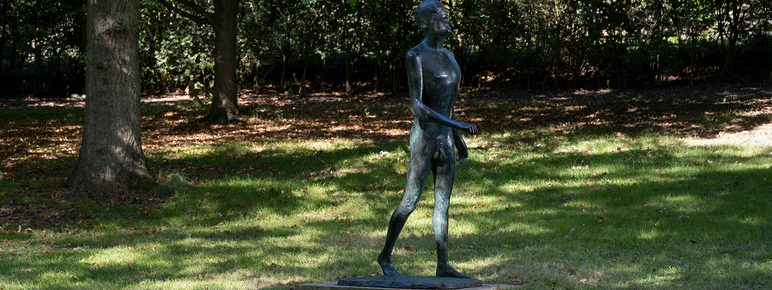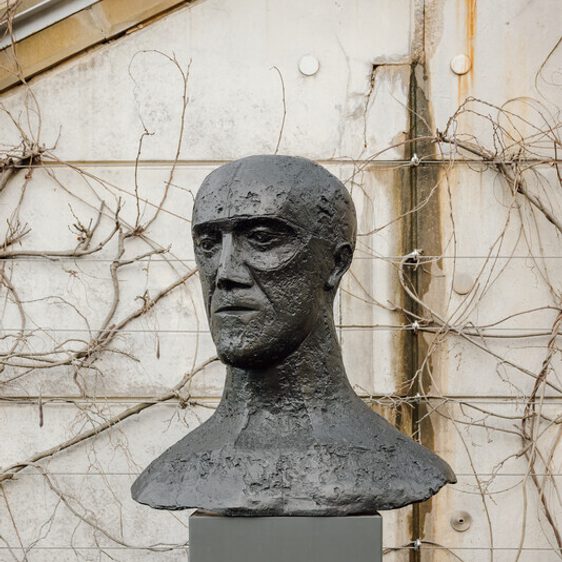
Elisabeth Frink: Protomartyr
Art Outdoors /Elisabeth Frink: Protomartyr
Conflict and oppression, alongside compassion, faith and spiritual strength are common themes in the work of Elisabeth Frink (1930-93). The horrors of the Second World War had a lasting impact on Frink and her artistic practice. She became a supporter of Amnesty International, and many of her sculptures and prints depict political prisoners.
Protomartyr is a life-size figure cast in bronze, with a brown and green patina. The tilted head and closed eyes of the sculpture hint at vulnerability and suffering. Protomartyr represents the first Christian martyr, Saint Stephen, who provided food and aid to poor members of his community in Jerusalem. His teachings were considered blasphemous, and he was sentenced to death. Frink’s sculpture has a peaceful presence despite the tragedy of Saint Stephen’s story.
Frink modelled her works using plaster, starting with metal rods or wire to provide structure. Once the plaster dried, she would carve into it using chisels, files and an axe, before casting the work in bronze. Through this process she tried to capture inner and outer states of being.
An exhibition of Frink’s sculpture, prints and plaster models – Natural Connection – is on display at The Weston until 23 February 2025.
Courtesy of a private collection.
You might also like
- Art Outdoors

Elisabeth Frink: In Memorium II
Frink succeeds in capturing a sense of defiance with In Memoriam II as the features of the figure express great sadness but also a sense of dignity. - Art Outdoors

Elisabeth Frink: Atlas
In Greek mythology, Atlas is a figure responsible for holding the heavens aloft. This sculpture combines several themes that Frink returned to throughout her career: strength and endurance alongside burden and vulnerability. - Art Outdoors

Elisabeth Frink: First Man
Elisabeth Frink was interested in human and animal forms. She used the male figure to explore the complexities of humanity, exposing both strength and vulnerability, as with First Man. - Art Outdoors

Elisabeth Frink: Riace II, III and IV
The Riace figures are inspired by the 5th century BCE bronze sculptures that were rediscovered in the sea off the coast of the Riace region of Italy in 1972.